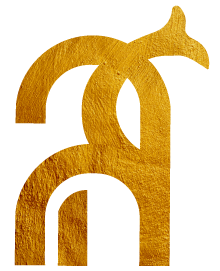บรรณานุกรม
ศรีศักร วัลลิโภดม, วลัยลักษณ์ ทรงศิริ. พุทธศาสนาและความเชื่อในสังคมไทย. กรุงเทพฯ:มูลนิธิเล็ก-ประไพ วิริยพันธุ์, ๒๕๖๐.
เว็บไซต์
ผู้จัดการออนไลน์. “หัวนะโม” ของขลังของดีแห่งนครศรีธรรมราช. แหล่งที่มา: https://mgronline.com/travel/detail/9620000074818
สิวะ พันธภาค. “คึกคัก!คนแห่เช่าหัวนะโมป้องกันโควิด”. แหล่งที่มา: http://www.thethaipress.com/2020/31183/
สำนักศิลปากรที่ 12 นครศรีธรรมราช. ศิลาจารึกหุบเขาช่องคอย.https://m.facebook.com/story.php?story_fbid=502586570340929&id=327219807877607
เล่าเปลี่ยนโลก EP.5. “หัวนะโม อักขระศักดิ์สิทธิ์แห่งทะเลใต้”.แหล่งที่มา: https://youtube.com/watch?v=OZ1yaVzHDNY&feature=share
Super User.ตามรอยพราหมณ์วังโบราณลานสกา.แหล่งที่มา: © 2021 เว็บไซต์ให้ความรู้เรื่องพราหมณ์,ความเป็นมาของพราหมณ์
Image. ฐานข้อมูลจารึกในประเทศไทย: จารึกหุบเขาช่องคอย. แหล่งที่มา: https://images.app.goo.gl/hoGBGWjtto6e7uUX7
Hua Namo and COVID-19
From Shared to Personal Sacred Objects
Arpapirat Vallibhotama
Translated by Pornnalat Prachakorn
Overview
Hua Namo is a sacred talismanic object originating from Nakhon Si Thammarat Province. It has long been believed that Hua Namo not only brings luck to its wearer but also provides magical protection against dangers and misfortunes, especially deadly diseases. Hua Namo began gaining its popularity in Thailand in May 2019, six months before the COVID-19 pandemic hit, as Her Royal Highness Princess Maha Chakri Sirindhorn Chao Fah Patcharakitiyapha was seen wearing a bracelet adorned with Hua Namo pellets.
At the end of 2020 when Thailand was facing the second wave of COVID-19 infection, Hua Namo again became one of the most sought-after items among those who believed that it could protect them from COVID-19. This article is aimed to focus on the changes in people’s perceptions of charms and amulets in relation to supernatural powers.
The sacredness of Hua Namo, a small round silver object, lies in the South Indian Pallava letter inscribed on it. The Pallava script, developed in the 4th century CE, evolved into many Southeast Asian scripts such as the Old Khmer script and the Thai alphabet. The word “Nomo” or “Namo” is derived from the word “Nama” or “Namas” which is recited to pay homage to gods or any supernatural beings in both Brahmanism and Buddhism. It is a sacred sound similar to “Om” which represents the three major gods of Hinduism.
Hua Namo was first used as currency in trading goods and services. The belief in the sacred letter on Hua Namo also led to a popular tradition of burying them under the base of, for example, ordination halls, city walls and sema stones. Around the 13th-14th centuries CE, there was a cholera outbreak in Nakhon Si Thammarat. Its then ruler, King Chandrabanu, attempted to cure the illness by consecrating Hua Namo through a Brahmin ritual, summoning the three Hindu gods namely Brahma, Vishnu and Shiva to dwell in Hua Namo. Then, they were scattered around the city and the infected areas including water sources. It can be seen that Hua Namo was created as a means for protection at a city/community level as they were all placed in public areas. The use of Hua Namo as a personal sacred object probably occurred in a later time, reflecting significant changes in worldviews and perceptions about sacred items in the Thai society. Prior to the reigns of King Rama III-IV, a person was forbidden to wear or carry any religious objects. However, this perception gradually changed as wearing sacred items such as Buddha figurines and Hua Namo as personal sacred items increasingly became popular that they were used as ornaments on jewelry including rings, necklaces, pendants and bracelets.
คำสำคัญ :


